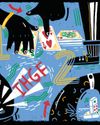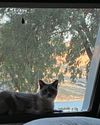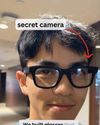
Standing on a beach looking out to sea leads many of us to ponder the question, I wonder what is out there? The explorers among us grab a mask and snorkel to see for ourselves. Warm, sunny waters invite hands-on exploration, making for enjoyable vacations. But what about the vast majority of the oceans deeper than 40 meters (131 feet)-beyond the range of most scuba divers? Technological advances, often driven by the military and the oil industry, have given scientists new tools to take them deeper. As a result, ocean exploration has increasingly become robotic.
Robots allow scientists to locate and investigate marine animals, ecosystems, and shipwrecks and other submerged archaeological sites at depths beyond that 40-meter easily-accessible depth. Robotic explorers generally fall into two categories, autonomous underwater vehicles (AUVS) and remotely operated vehicles (ROVS). Each type of vehicle has specific capabilities that make it better suited to certain kinds of research.
Secrets in the Deep
Why would scientists want to spend the time and effort needed to locate and study a shipwreck in water deeper than they can reach by diving? Shipwrecks in the deep ocean can yield information about their place of origin or their early history that has not been scrambled by the effects of waves. (Waves are much more prevalent in shallow water.) Fragile artifacts are also more intact when they have escaped wave action. Not surprisingly, shipwrecks beyond the reach of scuba divers also have better site integrity. That's a location's ability to yield information to answer important research questions. Shipwrecks found in shallow waters are often like a book with its pages jumbled or ripped out.
Denne historien er fra July/August 2023-utgaven av Muse Science Magazine for Kids.
Start din 7-dagers gratis prøveperiode på Magzter GOLD for å få tilgang til tusenvis av utvalgte premiumhistorier og 9000+ magasiner og aviser.
Allerede abonnent ? Logg på
Denne historien er fra July/August 2023-utgaven av Muse Science Magazine for Kids.
Start din 7-dagers gratis prøveperiode på Magzter GOLD for å få tilgang til tusenvis av utvalgte premiumhistorier og 9000+ magasiner og aviser.
Allerede abonnent? Logg på

HOUSE OF CARDS
TRY THE PERFECT EXPERIMENT—AND THEN REFLECT ON HOW IT WENT.

ACCIDENTALLY Delicious
Have you ever been really hungry, but there wasn't much to eat in your kitchen? Did you throw together a bunch of stuff you had on hand and were pleasantly surprised when it tasted good?

IS YOUR SOCIAL MEDIA FEED TOO PERFECT?
EVERYONE'S LIFE CAN APPEAR PERFECT ON SOCIAL MEDIA. On YouTube, Instagram, Snapchat, and similar apps, people tend to share their happiest, most picturesque moments. They carefully compose any text to get the message just right. They use filters and enhancements to glam up images and videos. The app sorts the posts with the most likes and comments to the top. The end result? All you see of others' lives is the best of the best.

Art ALERT!
THE CASE OF THE MASTERPIECE THAT WASN'T

MARYAM ZARINGHALAM
SCIENCE POLICY FELLOW AND WRITER

Lost Cat Treks More Than 800 Miles to Get Home
Rayne Beau (pronounced RANE-BO, as in \"rainbow\") is a two-year-old Siamese cat.

EASY AS ABC
But in number theory, well, it's complicated.

That Wanaka Tree Gets a Companion
\"THAT WANAKA TREE,\" AS IT'S CALLED, IS A FAMOUS WILLOW TREE THAT GROWS OUT OF LAKE WANAKA ON THE SOUTH ISLAND OF NEW ZEALAND.

Two College Students Devise Smart Glasses That Can ID People
YOU'RE WAITING FOR THE SUBWAY WITH A COUPLE OF YOUR FRIENDS.

Two Comb Jellies Can Fuse Their Bodies Together to Become One
COMB JELLIES ARE GELATIN-LIKE AND MOSTLY SEETHROUGH INVERTEBRATES, OR ANIMALS WITHOUT A BACKBONE, THAT FLOAT IN THE OCEAN NEAR SHORE.